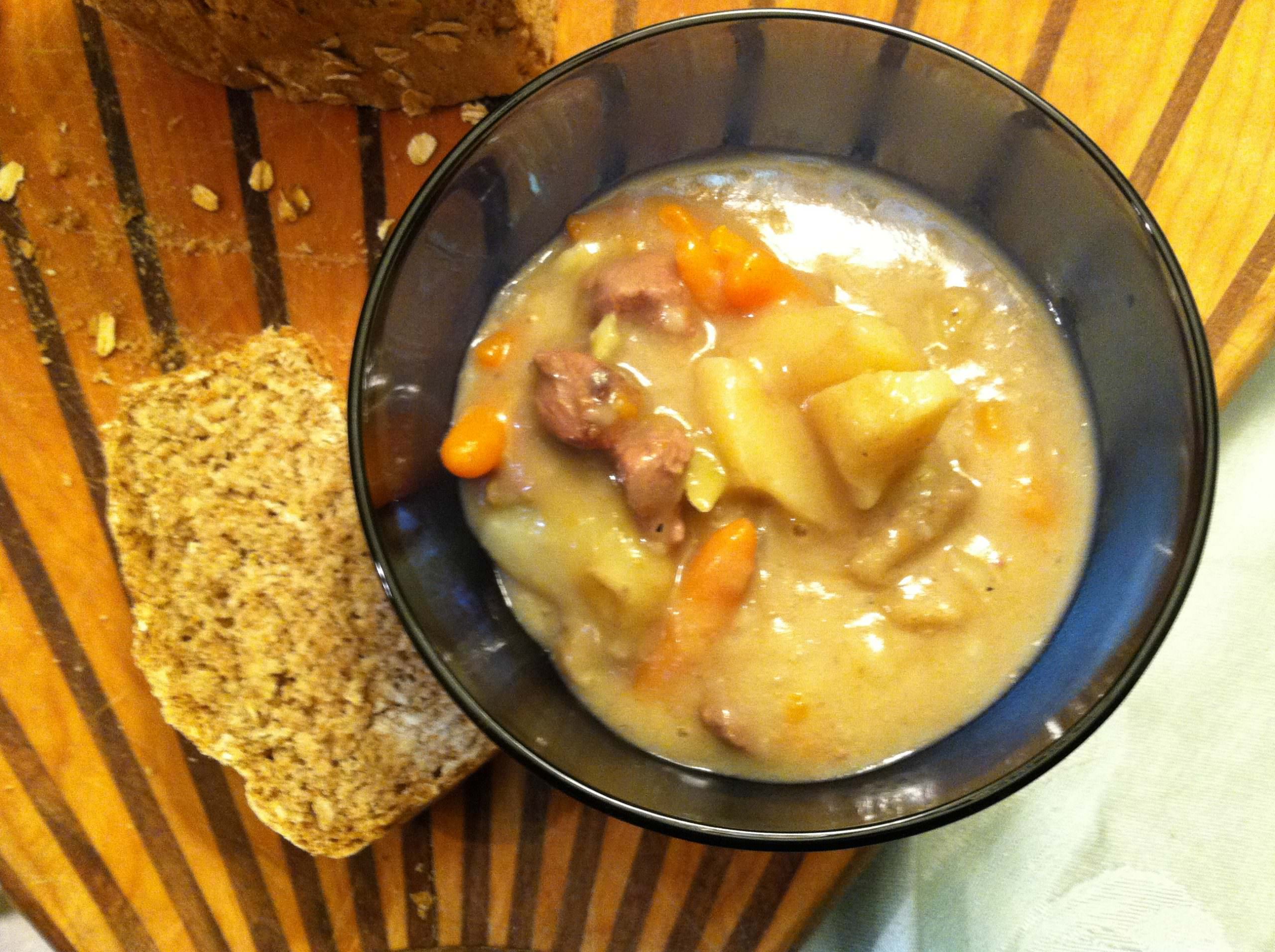Edible Reno-Tahoe blog
Story and photos by Jennifer Rachel Baumer
Hearty Fare for Cold Winter Nights
Cold, snowy, winter days can use a pick-me-up of thick, hearty bread and a bowl of hot stew. When it’s brisk — or downright cold — outside, here’s a combination that should satisfy after a day playing in or shoveling off the snow.
Hearty Multigrain Bread
(courtesy of Jennifer Rachel Baumer. Makes 1 loaf)
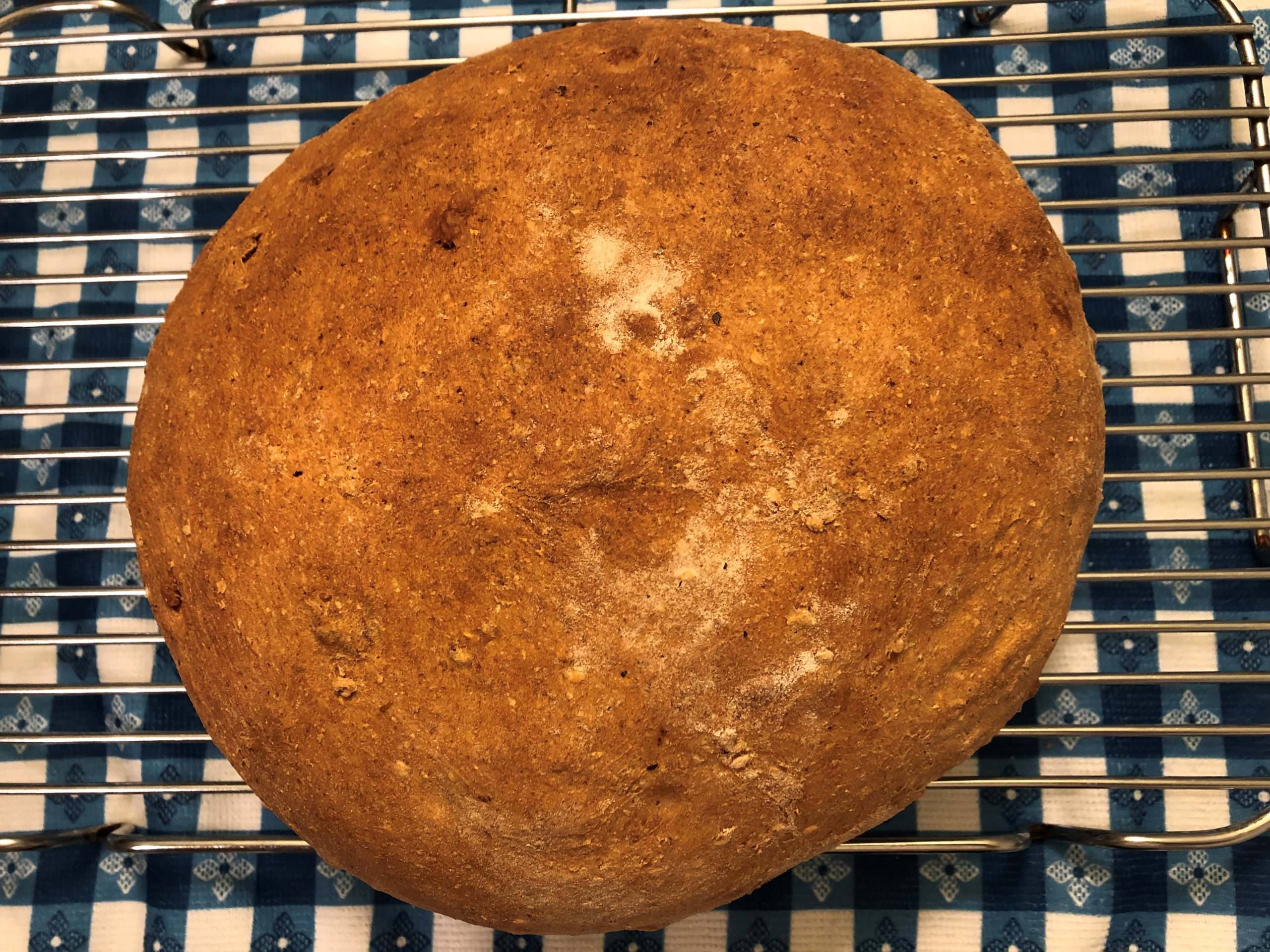
2 cups unbleached, all-purpose flour
1½ cups whole wheat flour
2 teaspoons sea salt
1⅓ cups warm water
1 tablespoon honey
1 packet (or one yeast-measuring spoon, or 2¼ teaspoons) active dry yeast (not rapid rise)
1 cup sourdough starter (see recipe below)
2½ tablespoons dark rye flour
2½ tablespoons wheat germ
⅓ cup spelt
2 tablespoons sunflower seeds
2 tablespoons sesame seeds
1 tablespoon golden or dark flax seeds
1 tablespoon roasted, unsalted pumpkin seeds
⅓ cup toasted, coarsely chopped almonds
⅓ cup toasted, coarsely chopped hazelnuts
Before starting, spread almonds and hazelnuts on cookie sheet and place in 325 degree F oven for 20 minutes, then let cool before coarsely chopping. (Alternatively, stirring them constantly in a hot cast-iron frying pan also will toast them.)
In small bowl, mix yeast and honey and add ½ of the warm water. Let sit for a few minutes, then stir to dissolve yeast completely.
Mix 2 cups unbleached flour and 1 cup of the whole wheat flour in a large mixing bowl; reserve ½ cup of the whole wheat flour. Mix in salt, seeds, rye, wheat germ, and spelt. Create a hole in the middle.
Mix the remainder of the warm water with the water/yeast/honey mixture and pour into the hole in dry ingredients. Add 1 cup of starter. Mix flour in from the edges, forming a sticky dough.
Turn dough out onto a floured board and knead 5 to 10 minutes, adding reserved wheat flour as needed. The dough should remain slightly sticky, not become dry or clumping. If it just sticks to your fingers as you knead but pulls back into itself, that’s a good texture. If it sticks to you, add more flour, a sprinkle at a time (dusting your hands with it and then going back to kneading is a good way to avoid adding too much at once).
If the dough does get too dry, add water 1 tablespoon at a time. Before doing that, try kneading gently for a minute to see if the flour will incorporate. In our high desert climate, we have such low humidity it’s easy to get too much flour in a bread recipe, but sometimes just kneading it will incorporate the flour and bring the texture back in line. Too much flour will create a dry, dense loaf.
Let the dough rest on the floured board while you clean the bowl of the sticky dough. Leave the kneaded dough in a warm, draft-free place, covered with a piece of wax paper, until doubled. At our high elevation, and depending on how active the starter is, this can take as little as 45 minutes or as long as an hour and a half.
When the dough is doubled, turn it out on a freshly cleaned and floured board and incorporate the nuts while “punching down” the dough. Don’t overwork it; just knead in the hazelnuts and almonds. Shape the dough into one large, round loaf and place on an ungreased or parchment-paper-covered cookie sheet (it would probably do well on a baking stone, too). Let rise until doubled, 1 to 2 hours.
Preheat the oven to 425 degrees F partway through the rise. Bake for 35 minutes and cool on a wire rack. The bread is best the first day, or toasted after that.
For sourdough starter (prepare 24 to 48 hours before making the bread):
1 packet active dry yeast (or one yeast-measuring spoon, or 2¼ teaspoons yeast; not rapid rise)
2 cups all-purpose flour
2 cups warm water
Stir yeast into flour in a medium-sized mixing bowl. Stir in warm water and mix until it’s a smooth, soupy paste. Cover loosely with a sheet of wax paper and leave undisturbed for 24 to 48 hours until actively bubbly. If it never bubbles or becomes active, start over. If, after using it for the bread, you want to keep it, feed it another cup of flour and 1 cup warm water, stir into a paste, and store in covered jar in refrigerator.
Beef Stew
(courtesy of Jennifer Rachel Baumer. Serves 4)
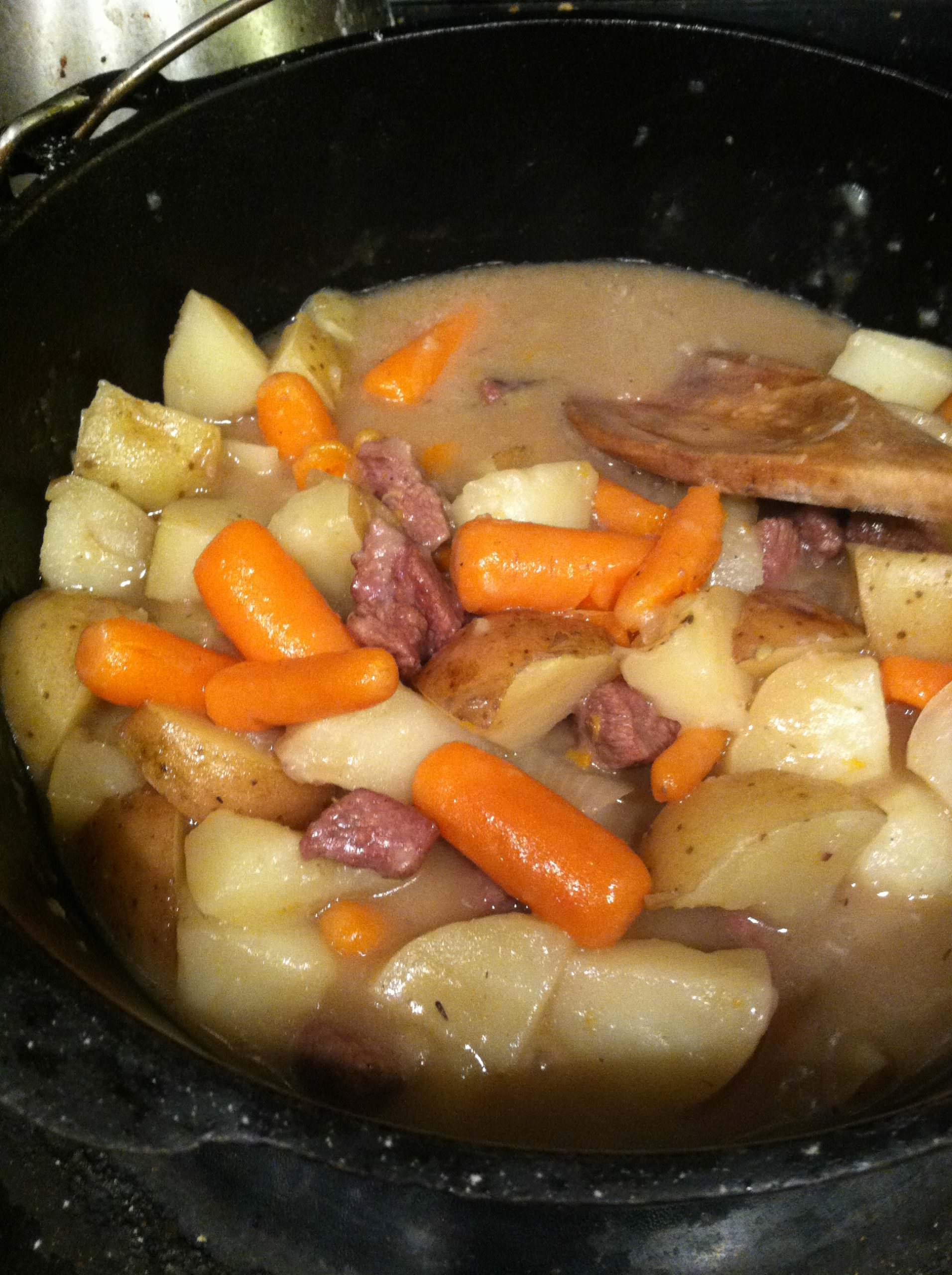
There’s a trend in some quest-type fantasy novels for characters who are on the road going from one part of the adventure to the next to stop at night and prepare stew. I’m impressed by their ability to either forage for root vegetables as well as flour, stock or bouillon, and salt, or to carry it in their packs — along with the cast-iron Dutch oven.
Provided you’re not on the road but in your kitchen and finished with the foraging, this is a simple, fairly quick beef stew to warm up with on cold winter nights.
1¼ to 1½ pounds chuck roast
Unbleached, all-purpose flour
Sea salt
Freshly ground black pepper
2 tablespoons Crisco or other solid vegetable shortening
4 beef bouillon cubes or equivalent
4 to 6 fist-sized waxy white or yellow potatoes
Baby carrots
Frozen petite peas (optional)
Wash and chop potatoes and carrots into bite-sized pieces. In a medium-sized pot, cover with cold water and bring to a boil, then let simmer until fork tender. Drain and reserve.
Cut roast into bite-sized pieces. In a container that can be closed (brown paper bag, plastic bag, storage container, or glass jar with lid) sprinkle in 2 to 3 tablespoons flour, a teaspoon of sea salt, and pepper to taste. Add the cut up roast, seal the container, and shake until the roast is coated.
Melt the Crisco in a Dutch oven over medium heat. Add flour-coated pieces of beef and brown until mostly cooked through.
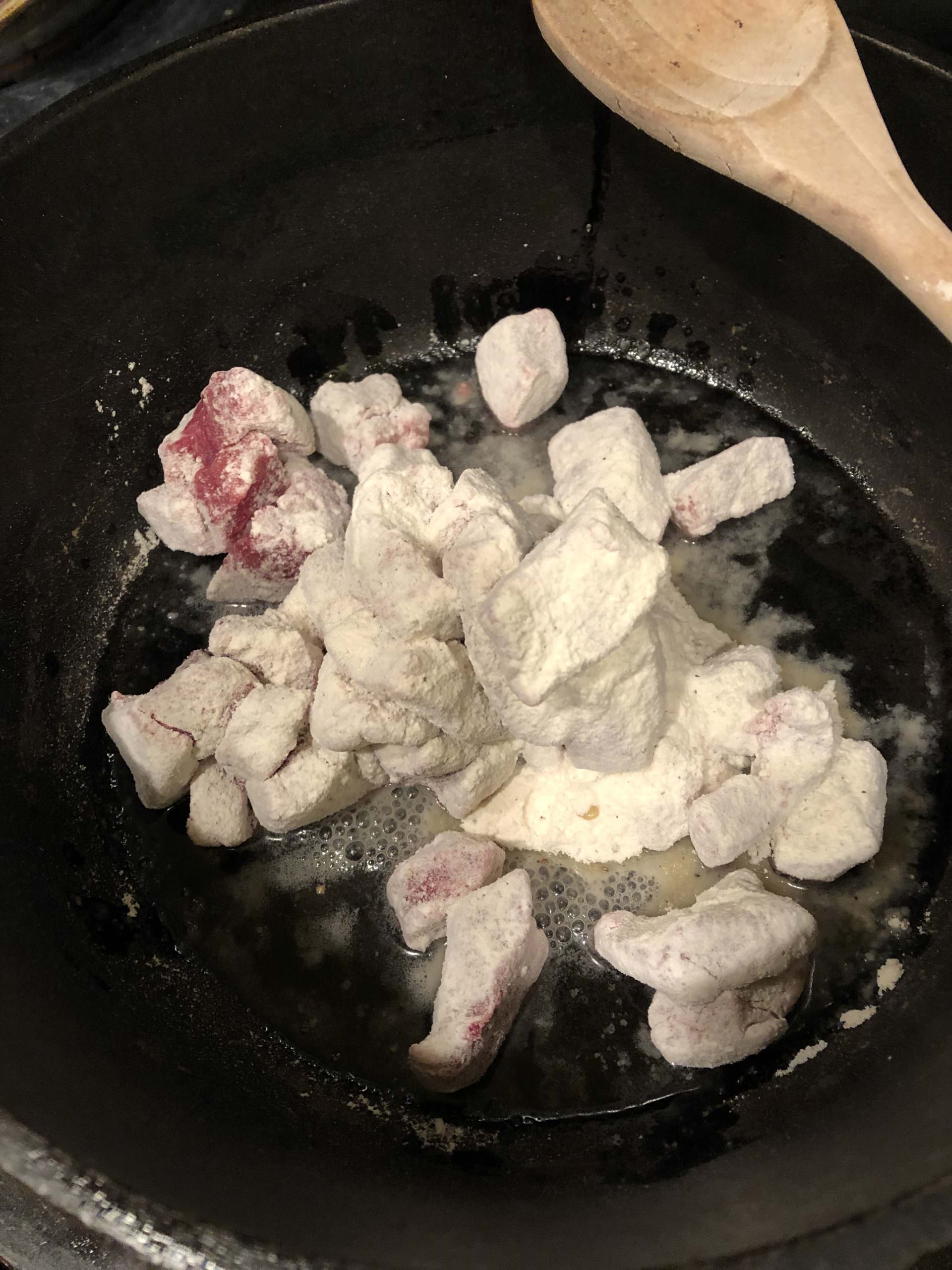
Meat browning in Dutch oven
Add 4 cups boiling water to beef bouillon cubes. Add slowly to browned meat and flour, scraping bottom of pot to loosen fond and using liquid to deglaze. Add another teaspoon or 2 of flour until liquid forms a thick gravy. Add drained potatoes and carrots, and the frozen green peas if using. When mixture comes to a boil, add about 1 teaspoon of sea salt, stir and cover; turn heat to simmer until you’re ready to serve.
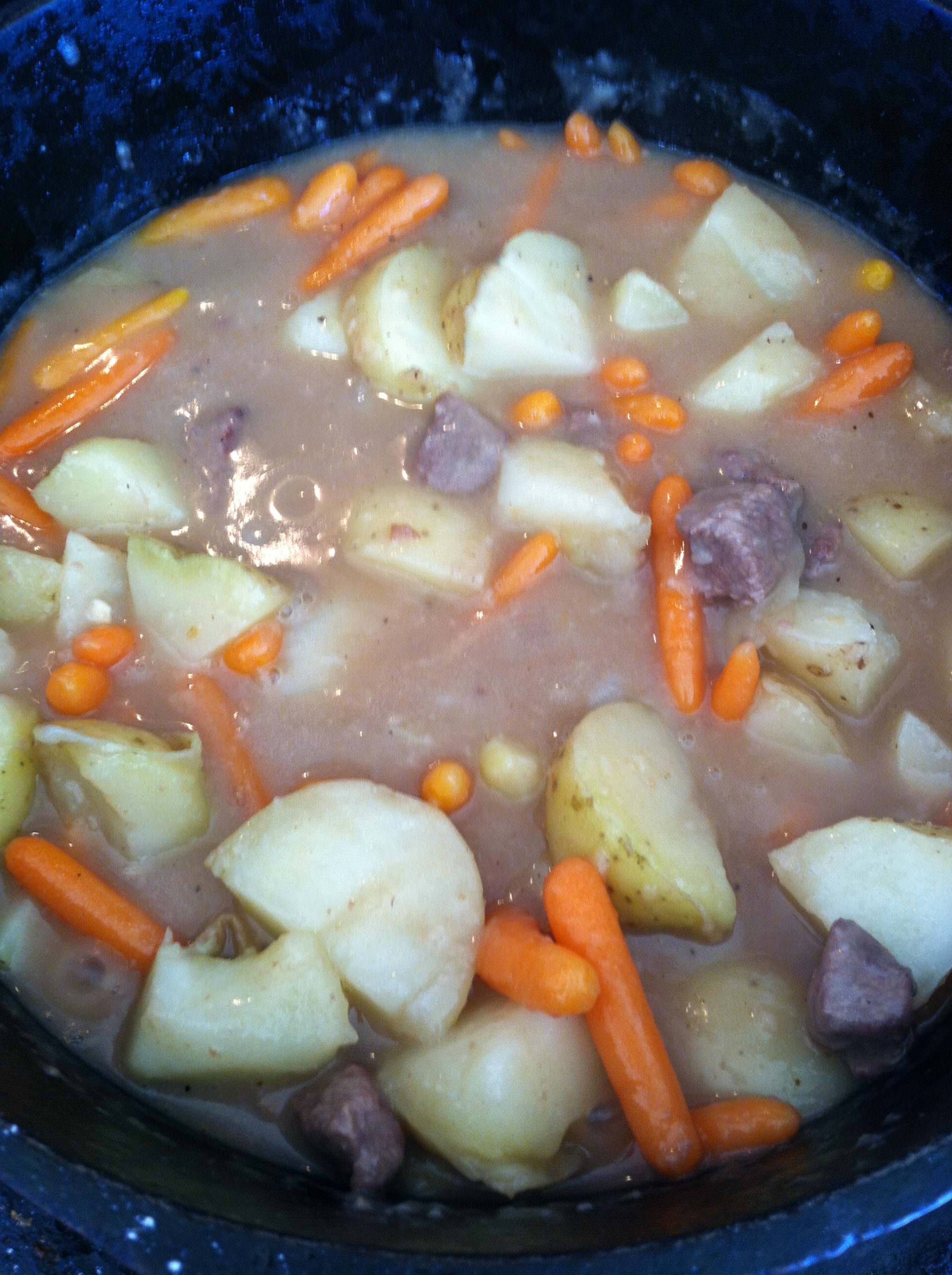
Stew simmering on the stovetop
